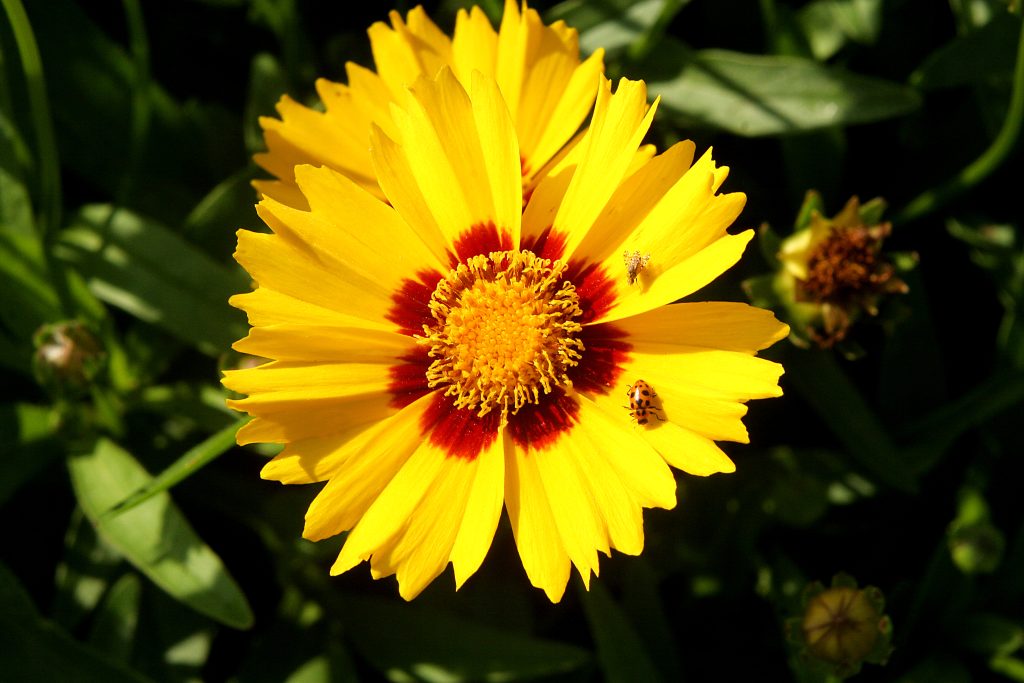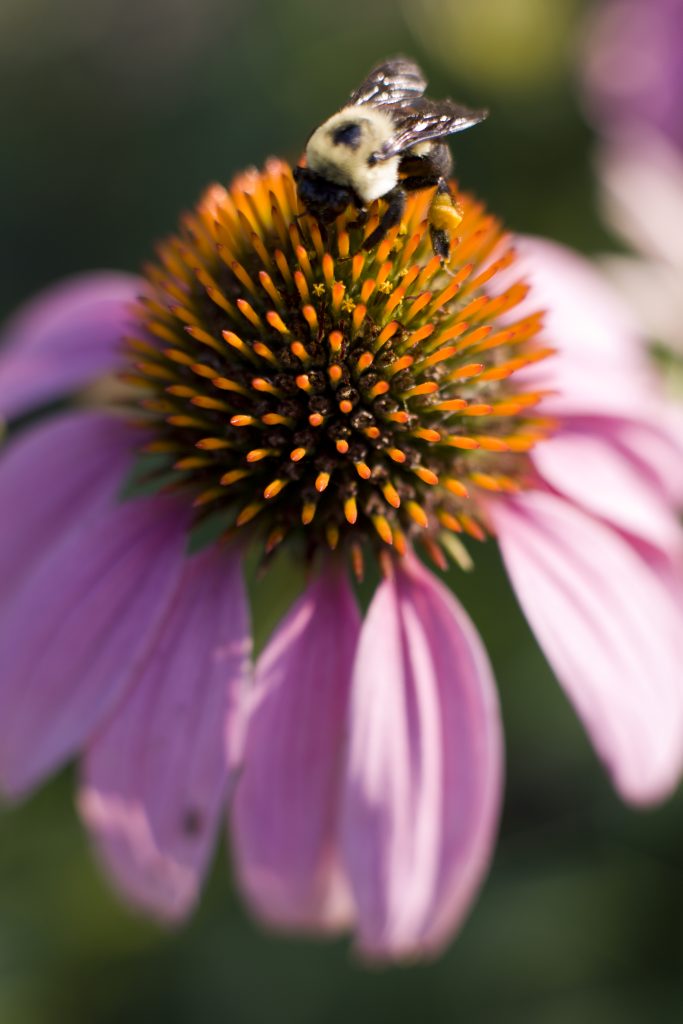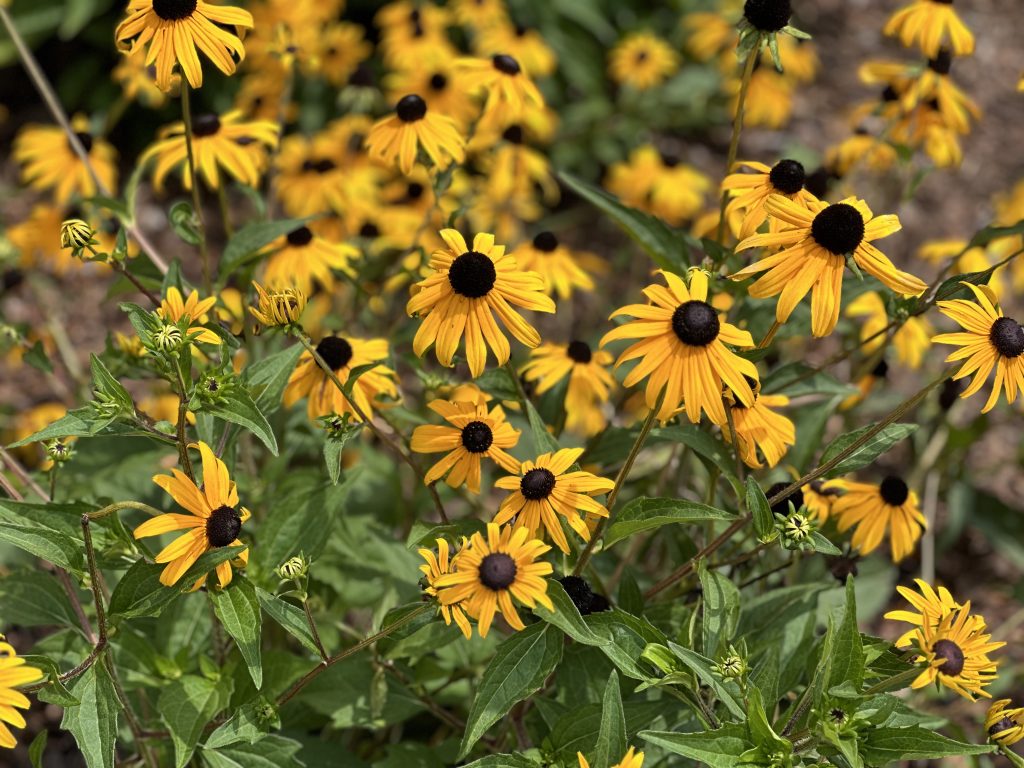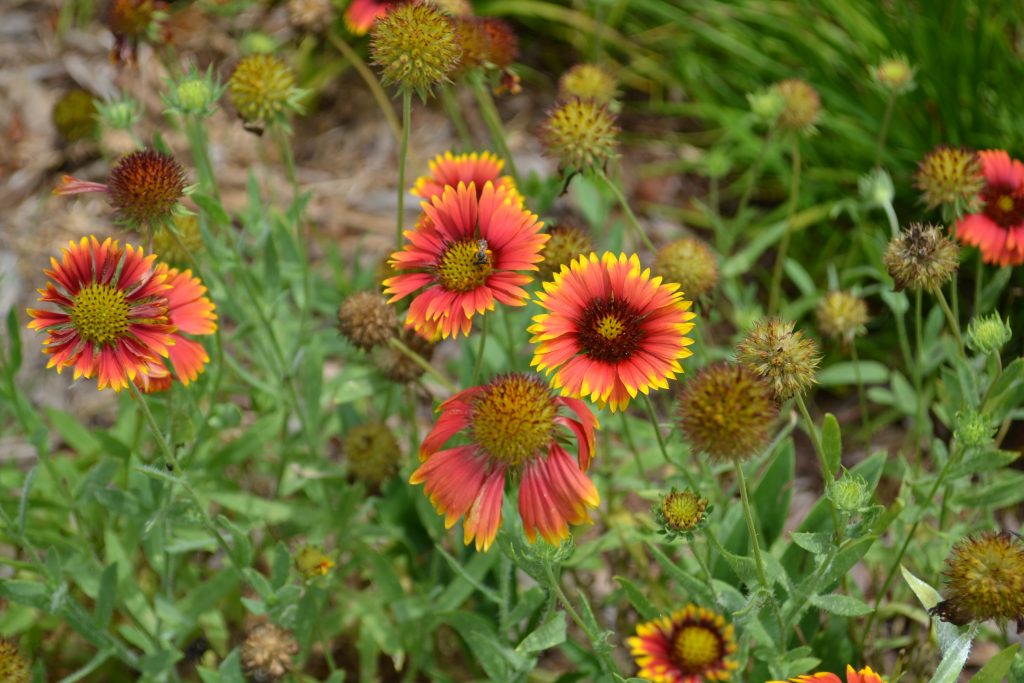Florida’s diverse ecosystem is home to a variety of native plants that provide resources for local pollinators. Native flowers are not only a beautiful addition to any garden but also play a crucial role in maintaining the health of our environment. Planting native species supports the delicate balance of local ecosystems and promotes the survival of native pollinators, such as bees, butterflies, and hummingbirds. Here are some native Florida flowers that are perfect for attracting and sustaining native pollinators.
Coreopsis (Coreopsis spp.)

October 2008 IFAS Extension Calendar Photo. Corey Yellow Coreopsis, flower. UF/IFAS Photo: Thomas Wright.
Coreopsis, also known as tickseed, is Florida’s state wildflower. These bright, yellow flowers are a favorite among native bees and butterflies. Coreopsis blooms from spring through fall, providing a long-lasting nectar source. They thrive in full sun and well-drained soil, making them an excellent choice for gardens and landscapes across the state.
Black-Eyed Susan (Rudbeckia hirta)
Black-eyed Susans are easily recognizable by their bright yellow petals and dark brown centers. These hardy perennials attract a variety of pollinators, including bees and butterflies. They are drought-tolerant and prefer full sun, making them a resilient addition to any garden.
Blanket Flower (Gaillardia pulchella)
Blanket Flower, also known as Firewheel, can be found throughout Florida in dry, sandy soils and sunny conditions. It is also a hardy perennial and is known for its long blooming period from spring to fall. The red and yellow blooms are a perfect pollinator attractant, particularly bees and butterflies.
Purple Coneflower (Echinacea purpurea)

Flowers and insects at the student gardens on the University of Florida campus. Pollinating bee. UF/IFAS Photo by Tyler Jones.
Purple coneflowers are not only striking with their large, purple petals and spiky centers but are also magnets for bees and butterflies. The nectar of this flower will attract a variation of bees, butterflies, and some hummingbirds, but the seeds that the coneflower produces can be eaten by wildlife. The purple coneflower is considered an endangered native Florida wildflower and can only be found naturally in Gadsden County.
American beautyberry (Callicarpa americana)
While this is not a “traditional” wildflower, the beautyberry is an important native pollinator plant and food source for wildlife. The flowers are small in size and vary from light pink to lavender in color. The blooms open in late spring/early summer and produce a purple berry that can be an additional food source for birds and other animals.
By choosing to plant native wildflowers, you can create a vibrant and thriving garden or landscape bed that supports Florida’s native pollinators. For more information on Florida’s native wildflowers please visit:
https://www.flawildflowers.org/
https://edis.ifas.ufl.edu/publication/EP297
https://edis.ifas.ufl.edu/topics/wildflowers
- Deck the Halls: Repurposing Yard-Waste for Holiday Decor - November 20, 2025
- Autumn Spotlight: The Mum - October 17, 2025
- Nature’s Recycling: The Art of Composting - September 4, 2025


